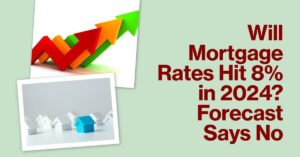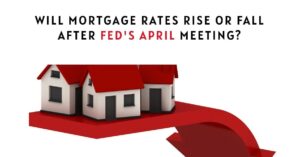For homebuyers in June 2024, the predictions of mortgage rates loom large. After a period of decline in early 2024, rates have seen a slight uptick in May, leaving many wondering what June holds. While the record lows of 2021 and 2022 are likely a thing of the past, some experts predict a continuation of the downward trend that began in late 2023. Let's explore some expert predictions for mortgage rates in June 2024.
The beginning of May saw the average 30-year fixed mortgage rate rise to 7.22%, marking its highest level since November, as reported by Freddie Mac. This increase is part of a trend that has seen rates surpass 7% in mid-April for the first time this year. Despite this uptick, experts maintain a hopeful outlook for a gradual decrease in mortgage rates throughout 2024.
Mortgage Rate Predictions for June 2024
For June 2024, the predictions indicate a range of possibilities:
- Maximum Interest Rate: 7.80% – This represents the highest end of the projected range. It's unlikely, but possible, to encounter rates this high in June.
- Minimum Interest Rate: 7.34% – This signifies the most optimistic scenario for June. If economic conditions improve significantly, rates could dip this low.
- Average Interest Rate: 7.59% – This reflects the most commonly anticipated rate for a 30-year fixed mortgage in June.
- Forecasted Rate at Month End: 7.57% – This suggests a slight decrease in rates by the end of June compared to the beginning. However, this is just a prediction, and the actual rate could be higher or lower.
It's crucial to remember that these are just predictions, and the actual rates in June could deviate from this range. Economic data releases throughout June, such as inflation reports and employment numbers, can significantly impact mortgage rates. Positive data could push rates up, while negative data could lead to a decrease. Also, individual lenders may offer slightly different rates based on their own internal policies and risk assessments.
Expert Predictions for 2024
A variety of forecasts from reputable sources provide insights into the expected mortgage rates trends in 2024:
- Freddie Mac predicts that mortgage rates will remain above 6.5% through the second quarter.
- Fannie Mae's Housing Forecast revised its mortgage rate forecast slightly downward, now expecting the 30-year fixed-rate mortgage to average 6.6% in 2024, with a further decrease to an average of 6.1% in 2025.
- The National Association of Realtors' Chief Economist, Lawrence Yun, suggests that rates will likely hover in the 6% to 7% range for most of the year due to high budget deficits and inflation metrics above the comfort level.
- The Mortgage Bankers Association (MBA) forecasts the 30-year fixed-rate mortgage to average 6.7% in Q2 and to end 2024 at 6.4%.
- Bank of America anticipates the first rate cut in December, with a cautious optimism that rates will drop below 7% in the coming months.
- Bright MLS forecasts predict rates to hit 6.2% by the fourth quarter.
- KPMG Economics warns of stubborn inflationary pressures, suggesting fewer rate cuts this year and a possibility of rates once again crossing the 7% threshold.
While the predictions provide a general direction, the actual rates can vary based on a multitude of factors. For those looking to navigate the housing market, staying updated with the latest economic trends and expert analyses is essential. As we move closer to June 2024, monitoring these predictions and preparing for potential rate changes will be key to making strategic mortgage decisions.
ALSO READ:
Mortgage Rate Predictions for Next 3 Years: Double Digit Rise











